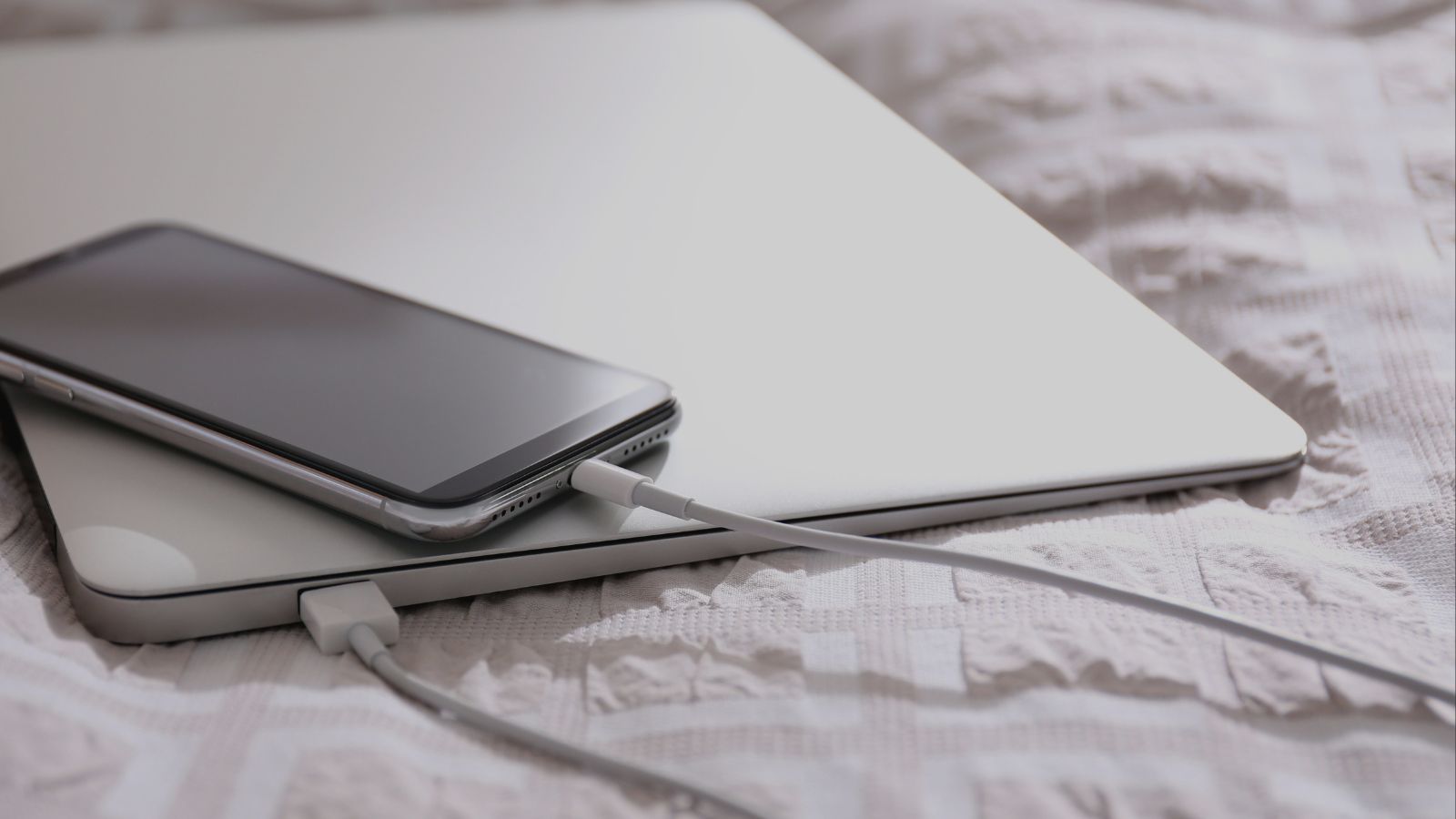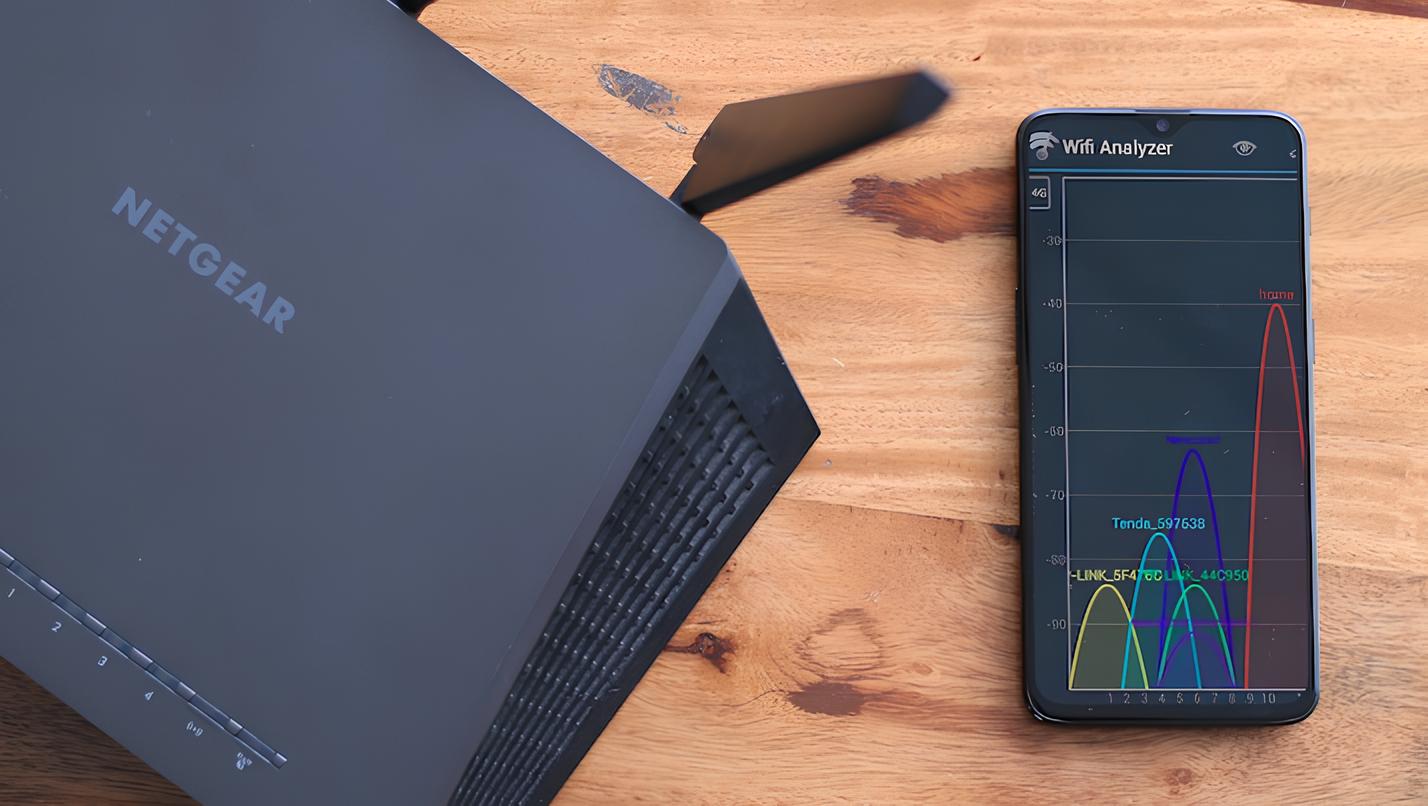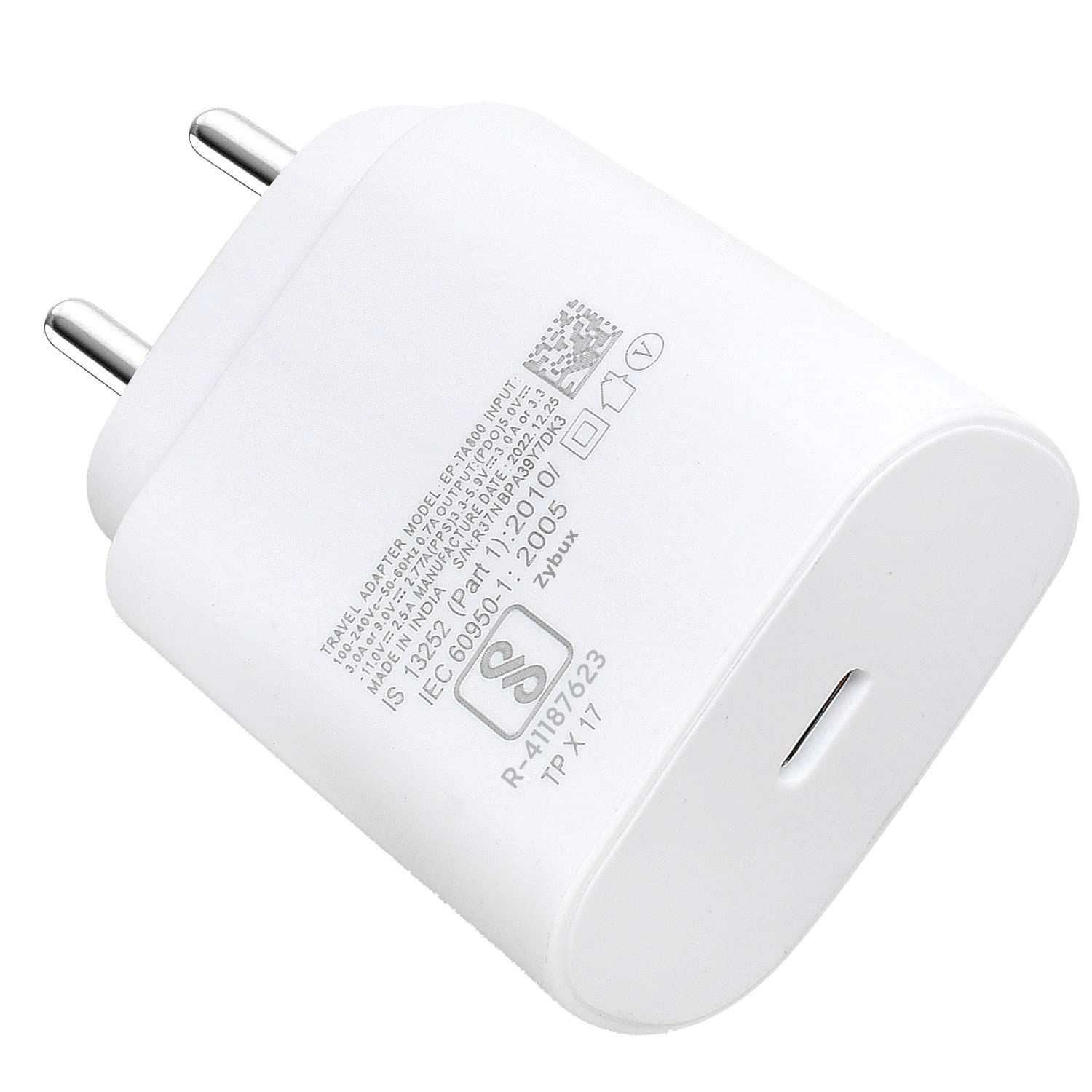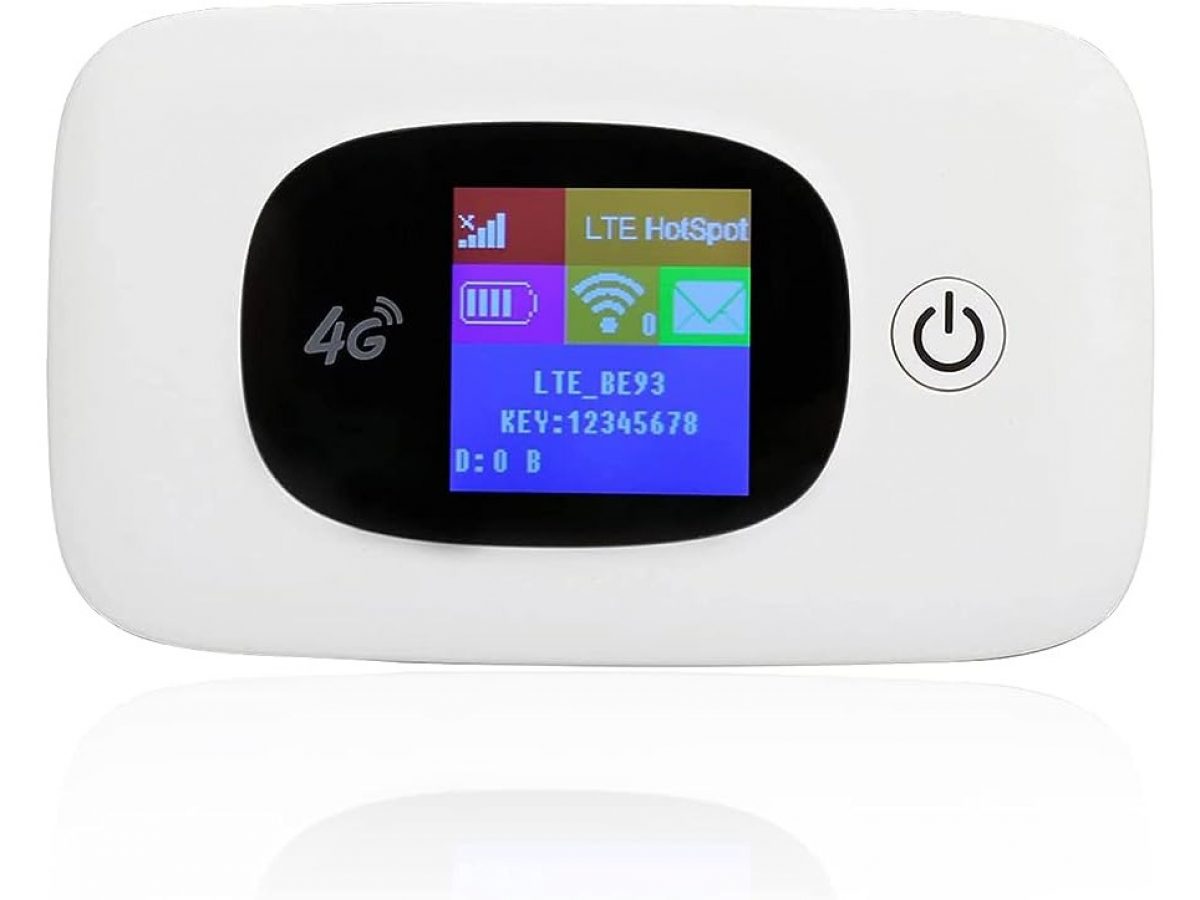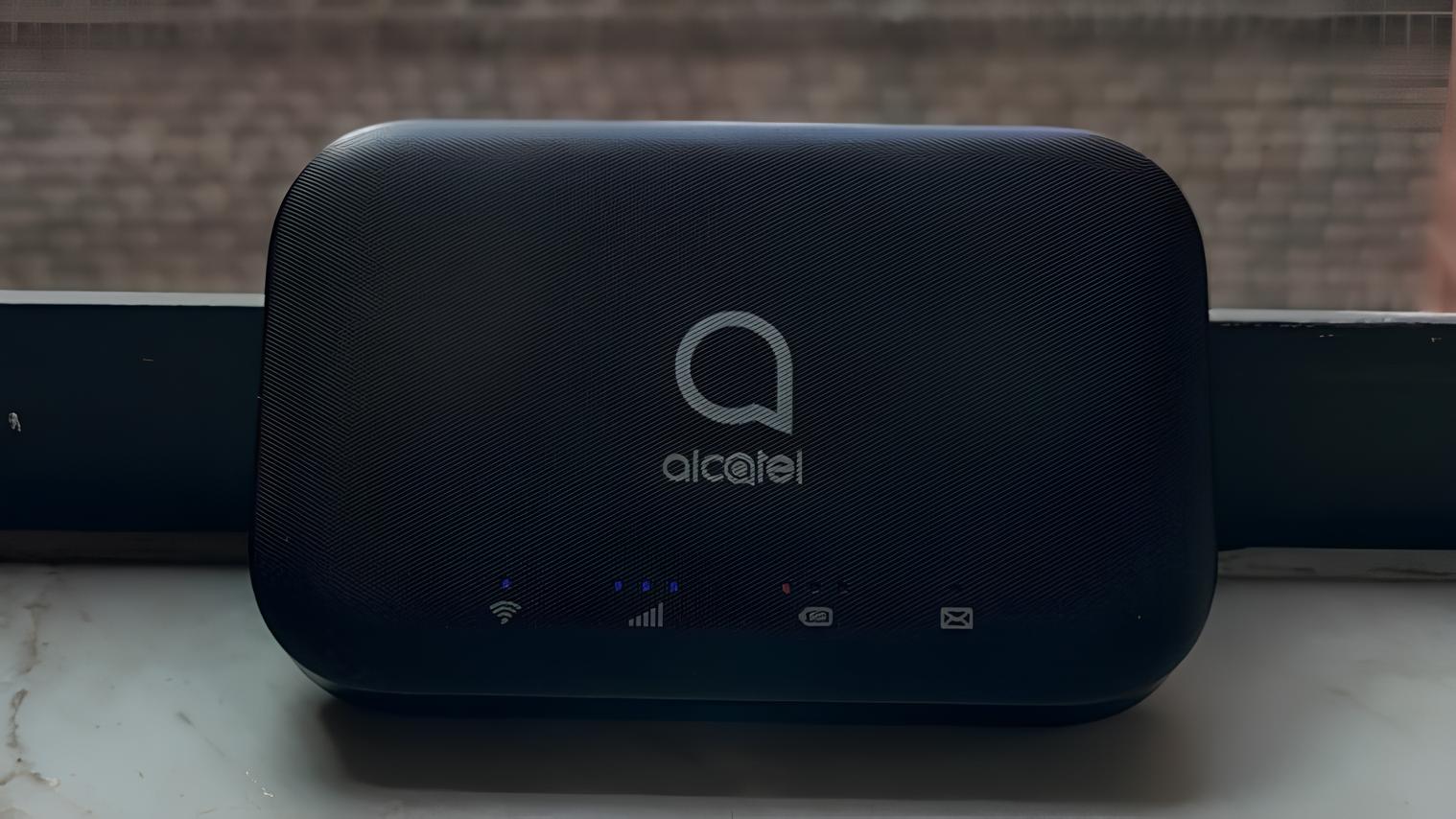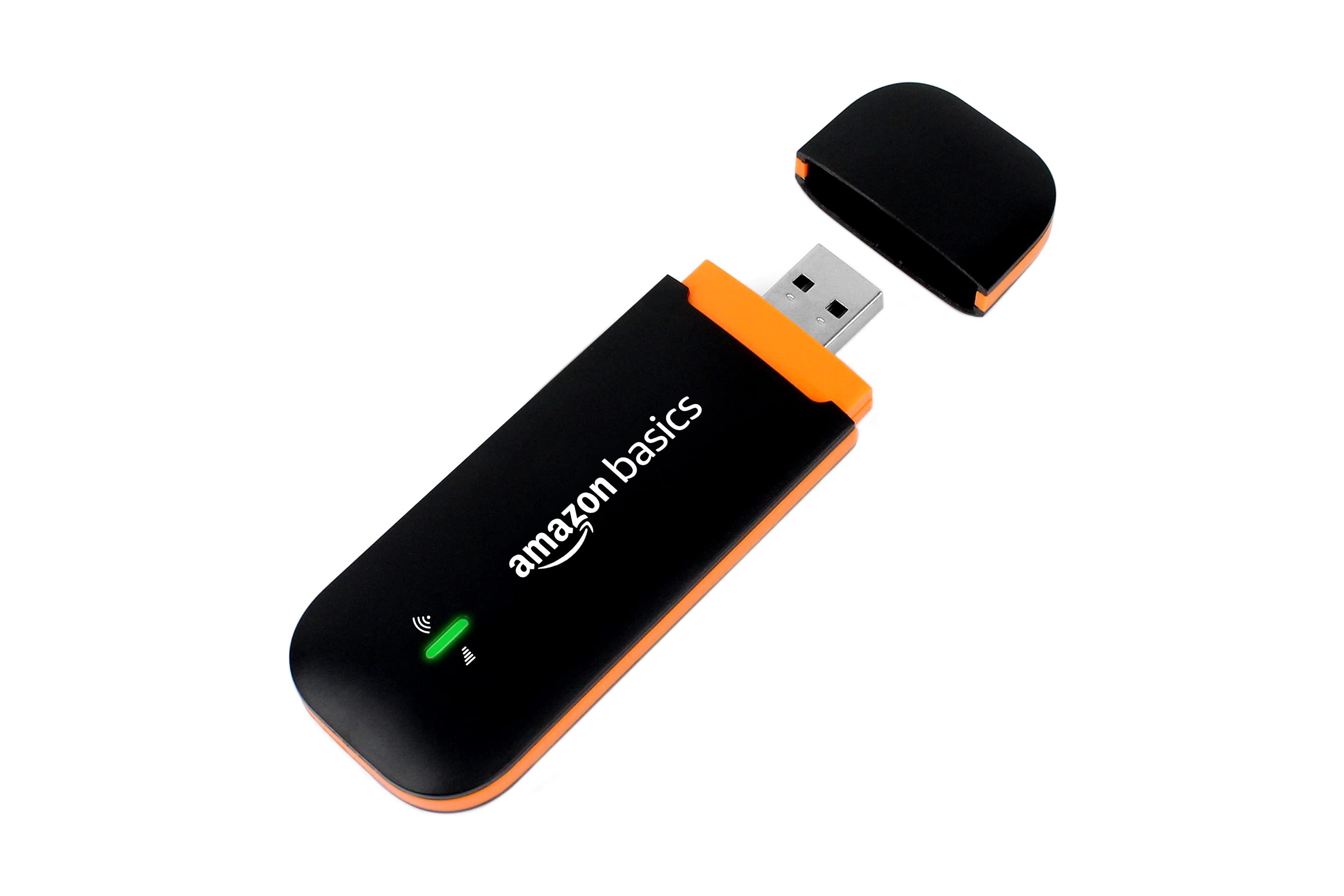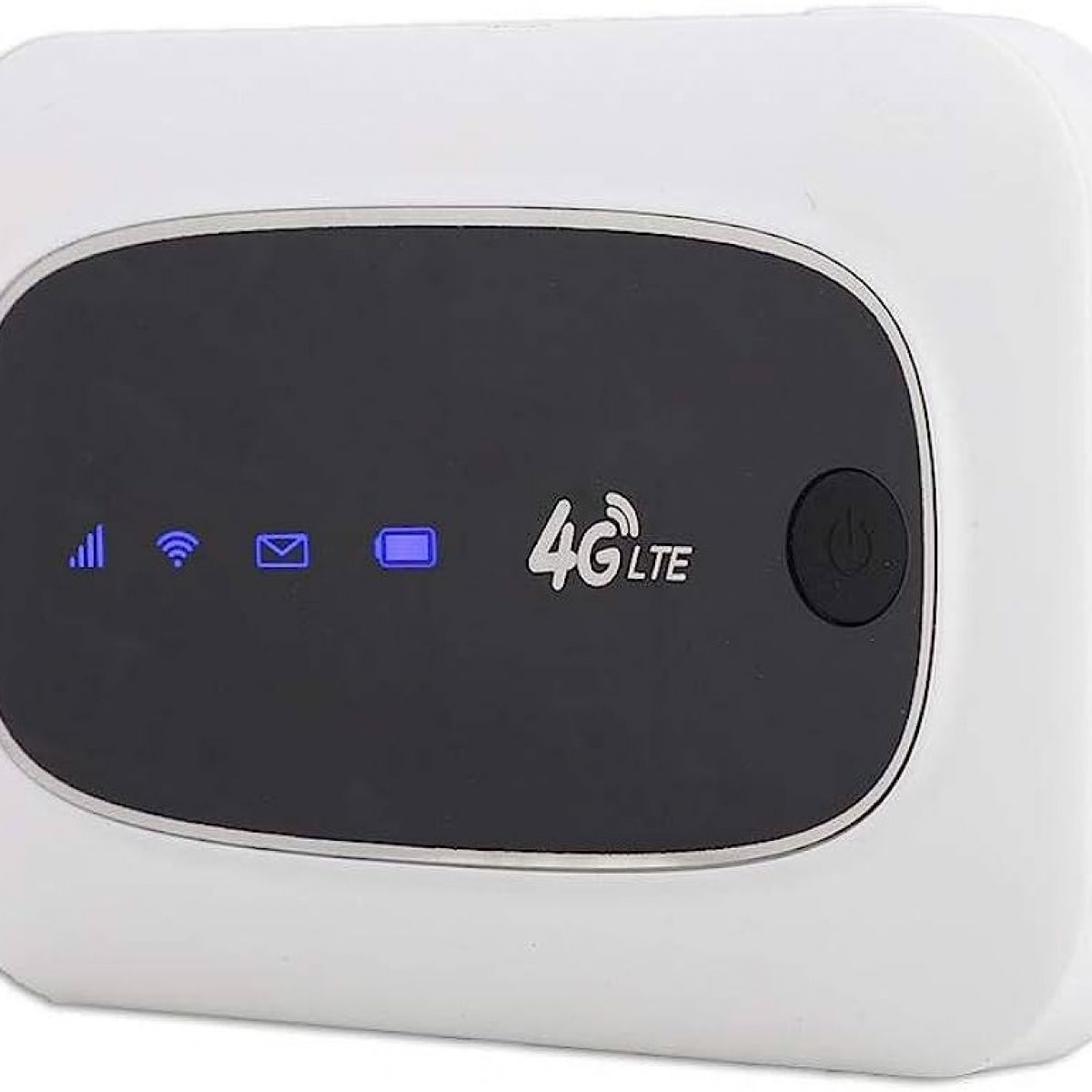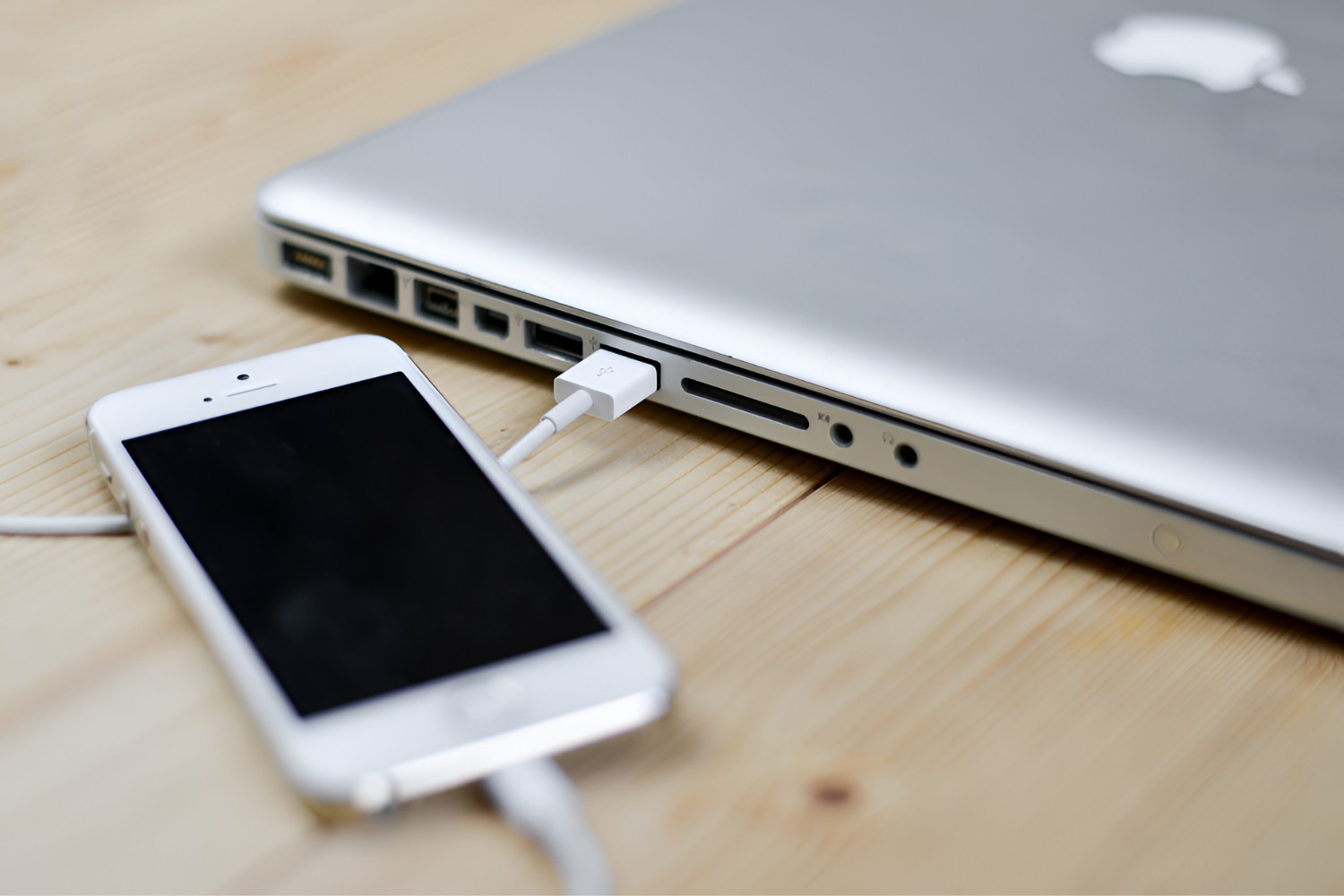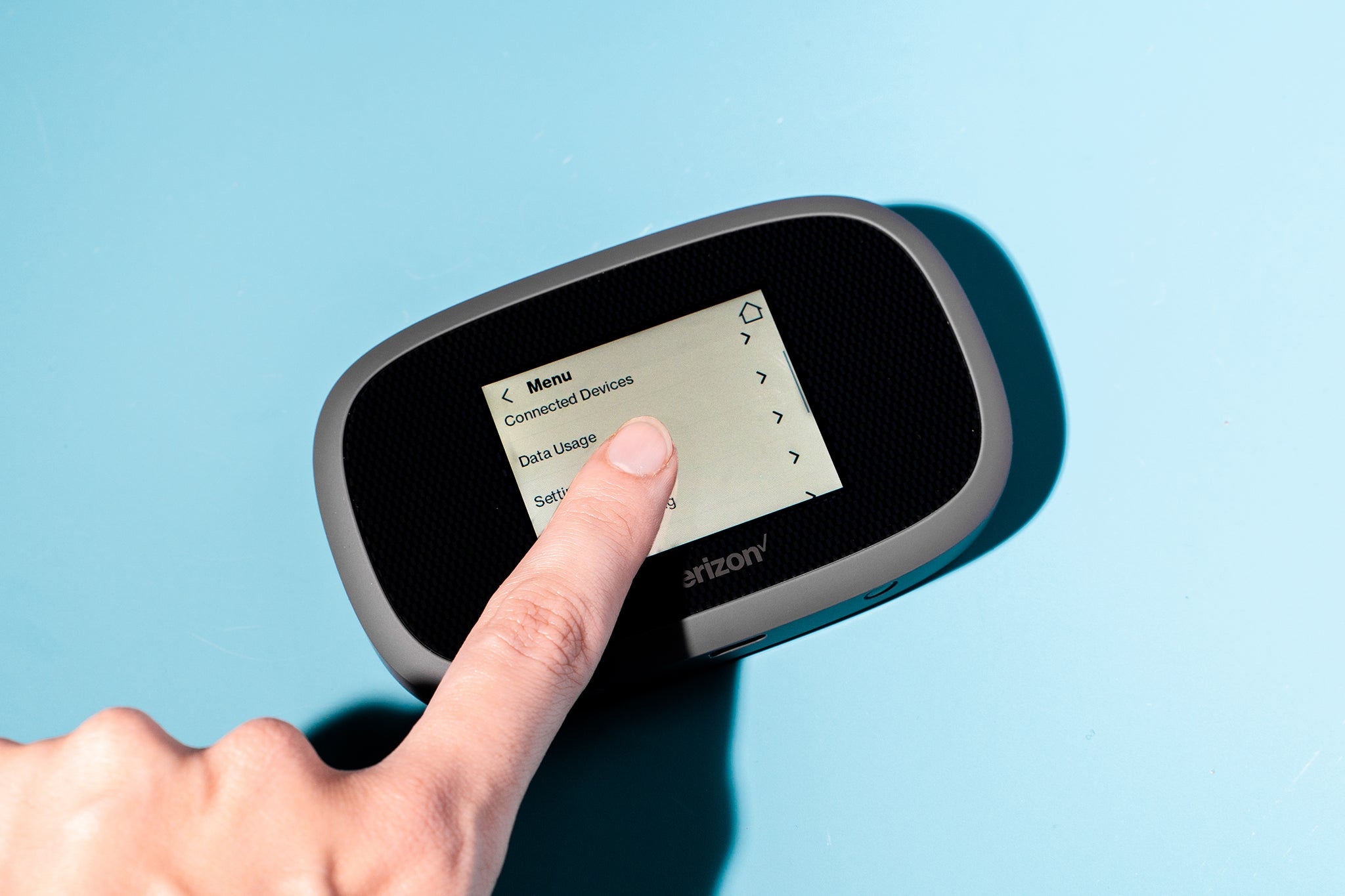Introduction
Setting up a USB connection to a hotspot is a convenient way to utilize your mobile device's internet connection on your computer or laptop. This process, known as USB tethering, allows you to bypass traditional Wi-Fi connections and directly link your device to your computer via a USB cable. Whether you're in a location with limited Wi-Fi access or you simply prefer the security and stability of a wired connection, USB tethering can be a valuable tool in your tech arsenal.
In this guide, we'll walk you through the process of setting up a USB connection to a hotspot in a few simple steps. By following these instructions, you can quickly establish a reliable internet connection on your computer using your mobile device's data plan. With the increasing reliance on digital connectivity in both personal and professional settings, knowing how to leverage USB tethering can be a game-changer for staying productive and connected on the go.
Now, let's dive into the step-by-step process of gathering the necessary equipment and configuring your devices to enable USB tethering. Whether you're a tech-savvy individual or a newcomer to this concept, this guide will provide you with the knowledge and confidence to seamlessly set up a USB connection to a hotspot and harness the power of your mobile internet on your computer.
Step 1: Gather Necessary Equipment
Before embarking on the journey of setting up a USB connection to a hotspot, it's essential to ensure that you have all the required equipment at your disposal. This includes the following:
-
Mobile Device: The cornerstone of this setup is your mobile device, which will serve as the source of the internet connection. Whether you're using a smartphone or a tablet, ensure that it is fully charged or connected to a power source to prevent any interruptions during the configuration process.
-
USB Cable: A high-quality USB cable is indispensable for establishing a stable connection between your mobile device and your computer. Opt for a cable with a reliable data transfer capability to ensure seamless tethering.
-
Computer or Laptop: The recipient of the internet connection, your computer or laptop should be in good working condition. Ensure that it has an available USB port for connecting to your mobile device.
-
Mobile Data Plan: Verify that your mobile device has an active data plan, as USB tethering relies on utilizing your device's mobile data to provide internet access to your computer.
Once you have gathered these essential components, you are well-equipped to proceed with the setup process. With these items at hand, you can seamlessly transition to the next step of enabling the hotspot on your device and initiating the USB tethering configuration.
Step 2: Enable Hotspot on Your Device
Enabling the hotspot on your mobile device is the pivotal first step in setting up a USB connection to a hotspot. The hotspot feature essentially turns your device into a portable Wi-Fi router, allowing other devices to connect and share its internet connection. Here's a detailed guide on how to enable the hotspot on various popular mobile operating systems:
For Android Devices:
- Accessing Hotspot Settings: Open the "Settings" app on your Android device and navigate to the "Network & Internet" or "Connections" section, depending on your device model and Android version.
- Enabling Hotspot: Look for the "Hotspot & Tethering" or "Portable Hotspot" option and tap on it. Then, toggle the switch to enable the hotspot feature. You can also configure the hotspot settings, such as the network name (SSID) and password, to secure your connection.
For iOS Devices (iPhone or iPad):
- Accessing Personal Hotspot: Go to the "Settings" app on your iOS device and select "Personal Hotspot."
- Enabling Personal Hotspot: Toggle the switch to enable the Personal Hotspot feature. You can also set a Wi-Fi password to secure the connection and allow other devices to join.
For Windows Devices:
- Accessing Mobile Hotspot Settings: Open the "Settings" app and navigate to the "Network & Internet" section.
- Enabling Mobile Hotspot: Select the "Mobile hotspot" option and toggle the switch to turn it on. You can customize the hotspot settings, including the network name and password, to tailor the connection to your preferences.
For macOS Devices:
- Accessing Hotspot Settings: Click on the Apple menu, go to "System Preferences," and select "Sharing."
- Enabling Internet Sharing: Choose "Internet Sharing" from the list of sharing services and select "Wi-Fi" in the "Share your connection from" dropdown menu. Then, choose "iPhone USB" or "iPad USB" from the "To computers using" list to enable USB tethering.
By following these platform-specific instructions, you can seamlessly enable the hotspot feature on your mobile device, paving the way for the subsequent steps in setting up the USB connection to a hotspot. Once the hotspot is activated, you're ready to proceed with connecting the USB cable to your device and initiating the tethering configuration on your computer.
Step 3: Connect USB Cable to Your Device
Now that the hotspot feature is activated on your mobile device, the next crucial step is to establish the physical connection between your device and your computer using a USB cable. This process forms the foundation of USB tethering, enabling the seamless transmission of internet data from your device to your computer. Follow these straightforward guidelines to connect the USB cable to your device:
-
Select the Correct USB Cable: Ensure that you have a compatible USB cable that can establish a reliable connection between your mobile device and your computer. Depending on your device model, you may need a USB-C, micro-USB, or Lightning cable. Choose a high-quality cable with a sturdy build to facilitate uninterrupted data transfer.
-
Locate the USB Port on Your Device: Identify the USB port on your mobile device, which is typically located at the bottom or sides of smartphones and at the bottom or back of tablets. It's essential to handle the USB port and cable with care to avoid any damage during the connection process.
-
Insert the USB Cable into Your Device: With the USB port on your device identified, gently insert one end of the USB cable into the port until it securely fits into place. Exercise caution to avoid applying excessive force, as the cable should smoothly slot into the port without resistance.
-
Ensure a Secure Connection: Once the USB cable is inserted, verify that it is firmly connected to your device. A secure connection is vital for enabling stable data transfer and maintaining the integrity of the USB tethering setup.
By following these steps, you can effectively connect the USB cable to your mobile device, laying the groundwork for the subsequent configuration of USB tethering settings on your computer. With the physical connection established, you are now ready to proceed to the next step, where you will connect the USB cable to your computer and configure the USB tethering settings to initiate the seamless transmission of internet data.
Step 4: Connect USB Cable to Your Computer
With the USB cable securely connected to your mobile device, the next pivotal step in setting up a USB connection to a hotspot involves linking the other end of the USB cable to your computer. This critical stage establishes the direct channel through which your computer can access the internet via your mobile device's data connection. Follow these detailed guidelines to seamlessly connect the USB cable to your computer:
-
Identify an Available USB Port: Locate an available USB port on your computer, typically situated on the sides or back of desktop computers and along the sides of laptops. It's essential to choose a USB port that is easily accessible and unobstructed to facilitate a smooth connection process.
-
Insert the USB Cable into Your Computer: With the USB port identified, gently insert the other end of the USB cable into the port on your computer. Ensure that the connection is secure and that the cable fits snugly into the port without any forceful maneuvering. A firm connection is vital for establishing a stable and reliable data transfer link.
-
Verify the Connection: Once the USB cable is inserted into your computer, verify that it is firmly connected and that there are no loose connections or disruptions. A secure connection is imperative for seamless data transmission between your mobile device and your computer.
-
Monitor Device Recognition: Upon connecting the USB cable to your computer, monitor your computer's display for any notifications related to device recognition. Depending on your computer's operating system, you may receive prompts or notifications indicating that a new device or network connection has been detected.
By meticulously following these steps, you can effectively connect the USB cable to your computer, establishing the vital link that enables the transmission of internet data from your mobile device. With the physical connection in place, you are now poised to proceed to the next step, where you will configure the USB tethering settings on your computer to initiate the seamless utilization of your mobile device's data connection for internet access.
Step 5: Configure USB Tethering Settings
Configuring the USB tethering settings on your computer is a crucial phase in the process of setting up a USB connection to a hotspot. This step involves customizing the network settings to enable the seamless transmission of internet data from your mobile device to your computer via the USB tethering connection. By meticulously configuring these settings, you can ensure a stable and reliable internet connection, leveraging the full potential of your mobile device's data plan.
The specific steps for configuring USB tethering settings may vary depending on your computer's operating system. Here's a comprehensive guide on how to configure these settings on popular operating systems:
For Windows Computers:
- Access Network Settings: Click on the network icon in the taskbar and select "Open Network & Internet settings."
- Navigate to Mobile Hotspot Settings: In the settings window, click on "Mobile hotspot" in the left-hand menu.
- Enable USB Tethering: Under the "Share my Internet connection from" dropdown menu, choose your mobile device's connection, which is typically labeled as "Ethernet" followed by your device's name.
- Confirm Tethering Connection: Once the USB tethering option is selected, your computer will establish the connection to your mobile device, allowing you to access the internet using the mobile data plan.
For macOS Computers:
- Access Network Settings: Go to the Apple menu, select "System Preferences," and click on "Network."
- Select USB Tethering Connection: In the network settings, choose the USB Ethernet or iPhone USB option to enable USB tethering.
- Configure IP Settings: If necessary, configure the IP settings to ensure that the USB tethering connection is assigned an IP address and subnet mask automatically.
- Verify Connection: Once the settings are configured, verify that the USB tethering connection is active and that your computer is successfully utilizing your mobile device's internet connection.
By following these platform-specific instructions, you can effectively configure the USB tethering settings on your computer, establishing a seamless and reliable connection to your mobile device's hotspot. This pivotal configuration phase sets the stage for utilizing your mobile device's data plan to access the internet on your computer, providing a versatile and convenient connectivity solution.
With the USB tethering settings configured, you are now ready to proceed to the final step of testing the connection, ensuring that the USB connection to the hotspot is fully operational and ready for use.
Step 6: Test the Connection
After configuring the USB tethering settings, it's essential to verify the functionality of the USB connection to the hotspot by testing the connection. This crucial step allows you to confirm that your computer is successfully utilizing your mobile device's internet connection through the USB tethering setup. By conducting a comprehensive test, you can ensure that the connection is stable, reliable, and capable of meeting your internet access needs.
To test the USB connection to the hotspot, follow these detailed steps:
-
Internet Browsing Test: Open your preferred web browser on your computer and attempt to access various websites. Verify that web pages load seamlessly and that you can navigate the internet without encountering connectivity issues. This test allows you to confirm that the USB tethering connection is facilitating smooth internet browsing, indicating a functional and reliable setup.
-
Download and Upload Speed Test: Utilize online speed testing tools to measure the download and upload speeds of your internet connection. Conduct multiple speed tests to gauge the consistency and performance of the USB tethering connection. Ideally, the speeds should align with your mobile data plan's capabilities, reflecting a robust and efficient tethered connection.
-
Streaming and Video Playback Test: Stream a video or engage in video playback activities to assess the streaming quality and playback stability. Verify that the video content loads promptly, plays without buffering interruptions, and maintains a high-quality viewing experience. This test allows you to evaluate the suitability of the USB tethering connection for multimedia consumption and streaming applications.
-
Online Gaming Test (if applicable): If you engage in online gaming, launch your preferred gaming platform and participate in online gameplay. Assess the responsiveness, latency, and overall gaming experience to determine the suitability of the USB tethering connection for gaming purposes. A stable and low-latency connection is crucial for an optimal gaming experience.
By conducting these comprehensive tests, you can effectively evaluate the performance and reliability of the USB connection to the hotspot. It's essential to ensure that the connection meets your specific usage requirements, whether it involves general web browsing, media streaming, or specialized activities such as online gaming.
Upon successfully testing the connection and confirming its functionality, you can proceed to leverage the USB tethering setup to access the internet on your computer with confidence and reliability. This marks the culmination of the setup process, empowering you to harness the power of your mobile device's data plan for seamless internet connectivity on your computer.
Conclusion
In conclusion, the process of setting up a USB connection to a hotspot, also known as USB tethering, offers a versatile and convenient means of accessing the internet on your computer using your mobile device's data plan. By following the step-by-step guide outlined in this tutorial, you have gained valuable insights into the seamless configuration of this connectivity solution, empowering you to harness the full potential of your mobile device's internet connectivity.
From gathering the necessary equipment to configuring the USB tethering settings on your computer, each step in the setup process plays a pivotal role in establishing a reliable and efficient connection. The physical connection of the USB cable, the activation of the hotspot on your mobile device, and the meticulous configuration of network settings collectively contribute to a seamless tethering experience.
By conducting comprehensive tests to verify the functionality of the USB connection, including internet browsing, speed tests, multimedia streaming, and, if applicable, online gaming, you have ensured that the tethered connection meets your specific usage requirements. This thorough testing phase underscores the importance of confirming the stability and performance of the connection, providing you with the confidence to leverage USB tethering for diverse digital activities.
As digital connectivity continues to be integral to both personal and professional endeavors, the ability to establish a USB connection to a hotspot presents a valuable resource for staying productive and connected on the go. Whether you're navigating remote work requirements, seeking reliable internet access in areas with limited Wi-Fi availability, or simply preferring the security and stability of a wired connection, USB tethering offers a flexible solution to address diverse connectivity needs.
By embracing the knowledge and practical insights gained from this guide, you are well-equipped to seamlessly set up and utilize a USB connection to a hotspot, unlocking the potential of your mobile device's data plan for internet access on your computer. This newfound capability empowers you to navigate the digital landscape with confidence, ensuring that you can stay connected and productive regardless of your location or connectivity constraints.
In essence, the process of setting up a USB connection to a hotspot exemplifies the fusion of technological innovation and practical utility, offering a seamless bridge between your mobile device's internet connectivity and your computer. By mastering this setup process, you have expanded your tech repertoire, enhancing your ability to adapt to diverse connectivity scenarios and embrace the versatility of USB tethering as a valuable tool in your digital toolkit.







